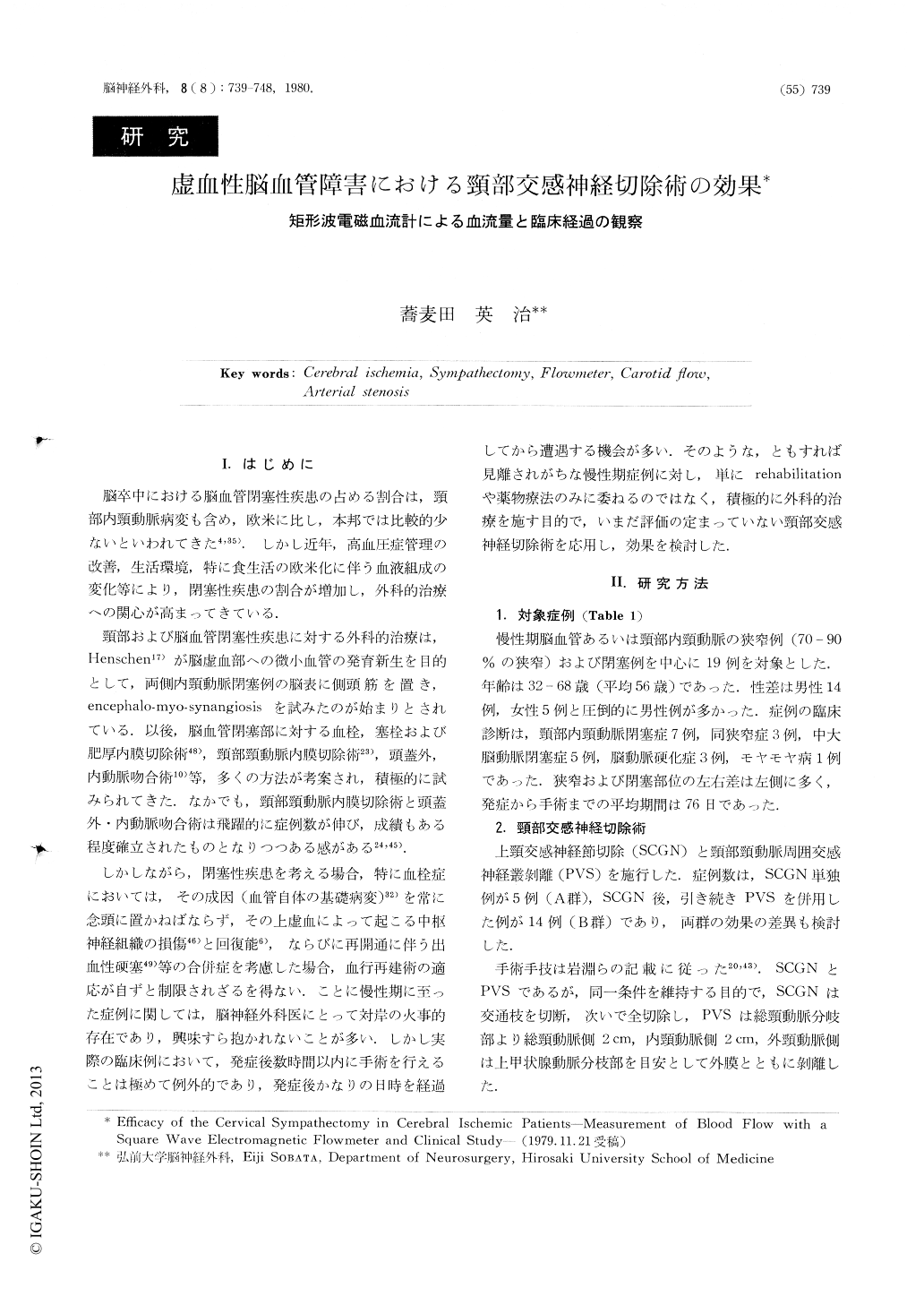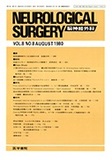Japanese
English
- 有料閲覧
- Abstract 文献概要
- 1ページ目 Look Inside
Ⅰ.はじめに
脳卒中における脳血管閉塞性疾患の占める割合は,頸部内頸動脈病変も含め,欧米に比し,本邦では比較的少ないといわれてきた4,35).しかし近年,高血圧症管理の改善,生活環境,特に食生活の欧米化に伴う血液組成の変化等により,閉塞性疾患の割合が増加し,外科的治療への関心が高まってきている.
頸部および脳血管閉塞性疾患に対する外科的治療は,Henschen17)が脳虚血部への微小血管の発育新生を目的として,両側内頸動脈閉塞例の脳表に側頭筋を置き,encephalo-myo-synangiosisを試みたのが始まりとされている.以後,脳血管閉塞部に対する血栓,塞栓および肥厚内膜切除術48),頸部頸動脈内膜切除術23),頭蓋外,内動脈吻合術10)等,多くの方法が考案され,積極的に試みられてきた。なかでも,頸部頸動脈内膜切除術と頭蓋外・内動脈吻合術は飛躍的に症例数が伸び,成績もある程度確立されたものとなりつつある感がある24,45).
The efficacy of cervical sympathectomy, namely superior cervical ganglionectomy (S. C. G. N.) and perivascular sympathectomy (P. V. S.) of the cervical carotid artery, was evaluated in terms of the rate of blood flow in the common carotid artery, mean arterial blood pressure (M. A. B. P.), gas contents and pl-I of arterial blood and clinical findings in 19 patients with chronic cerebral ischemic lesion. Five cases underwent the S. C. G. N. alone (group A) while 14 others had both procedures performed ( group B) and these two treatment groups were compared in terms of therapeutic effects.

Copyright © 1980, Igaku-Shoin Ltd. All rights reserved.


